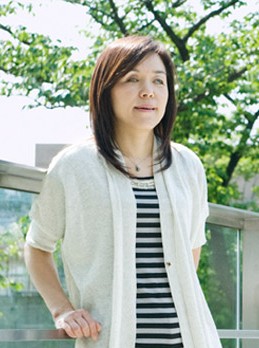- unknown (b.)
Bio/Description
A member of the IBM Academy of Technology and an IBM Fellow, she is an Accessibility Designer, supporting web designers and developers in creating more accessible content. Blind from the age of 14, she leads by example, demonstrating that the impossible is never out of reach. She is responsible for the research and development of IBM software and applications that significantly improve web accessibility for the visually impaired and others with special needs. Her contributions to the field of accessibility research include making the internet and other web resources available to the visually impaired via PCs by automatically converting text and icons on the screen to voice. She joined IBM in 1985 after completing the computer science courses for the blind at Lighthouse Japan. She received a B.A. degree in English Literature from Otemon University in 1982, and a Ph.D. in Engineering from the University of Tokyo in 2004. Prior to assuming her current role in 2000, she held research and development positions at the IBM Tokyo Research Lab, developing educational systems and user interfaces. Her work uses disability simulation and problem visualization features to help web designers and developers, understand accessibility issues on their web-designed pages at a glance. She is also researching how the visually impaired can access and represent various types of visual information non-visually using the hearing and touch senses. Since summer 2008, she has led the Social Accessibility project. Based on collaboration software developed by her team, it creates an open, collaborative environment where blind users, developers and sighted "supporters" work together to solve real life Web accessibility issues raised by blind users. She developed a digital Braille system and three key applications for the visually impaired, including the Braille Editing System (BES), which allows users to easily input and edit Braille using an ordinary keyboard and monitor. She also developed the Braille Dictionary System and the IBM Braille Forum Network. She promoted the electronic distribution of Braille materials over the IBM Braille Forum Network in collaboration with Braille libraries and schools for the visually impaired in Japan. She and her team have also developed a number of pioneering technologies, including a disability simulator called aDesigner, which helps Web designers identify potential design issues to make their websites more user-friendly to all; a tool called aiBrowser, which for the first time helps visually impaired users to access streaming video, animation and other visual online content. She and teams within IBM developed the Accessibility Tools Framework, which offers standardized design and application programming interfaces, allowing developers to create accessibility tools and applications easily and cost effectively. Contribution of these technologies and the framework to the open source community, Eclipse Foundation, may help stimulate assistive software innovation to advance Web 2.0 content accessibility. She was a key technical leader in the development of the IBM Home Page Reader (HPR), which was a computer program, a self-voicing web browser designed for people who are blind. It was produced in eleven languages and distributed worldwide. In 2006, it was announced on the Hpr mailing list that IBM does not have plans for any further updates of HPR and the software was subsequently withdrawn from sale by IBM in December 2006. It has been superseded by IBM Easy Web Browsing. Her inventions have been recognized in 10 patents. She has contributed to numerous technical journals and papers. She also teaches at Tsukuba Engineering College, focusing on human interface issues. She is a member of the Institute of Electronics, Information and Communication Engineers of Japan; the Information Processing Society of Japan and the Association for Computing Machinery. She is a member of the Association for Computing Machinery (ACM), the Information Processing Society of Japan, and IBM Academy of Technology. She has been supporting accessibility related open standards efforts, and 2010 she served as a co-general chair for the international conference for Web accessibility (W4A). She was inducted into the Women in Technology International (WITI) Hall of Fame in 2003, and both within and outside of IBM, she has been actively working to help women engineers pursue technical careers. She was appointed to IBM Fellow in 2009, IBM's most prestigious technical honor.
-
Gender:
Male -
Noted For:
Co-developer of IBM software and applications that significantly improve web accessibility for the visually impaired and others with special needs by automatically converting text and icons on the screen to voice -
Category of Achievement:
-
More Info:


